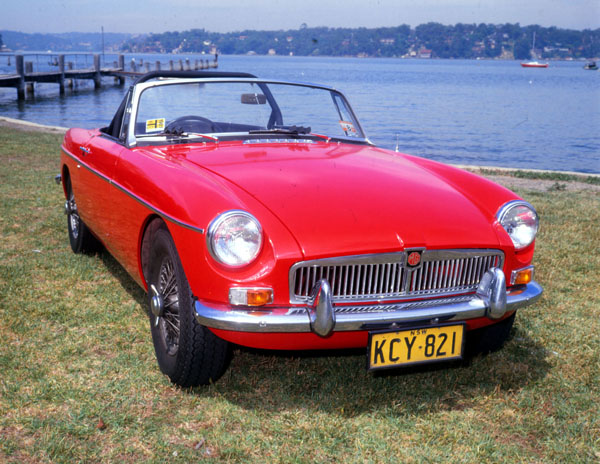Among popular and mid-priced European sportscars of the 1960s, front engines, rear-wheel-drive and four-speed gearboxes were still the norm. However, the use of synchromesh on all gears became standard on most cars in place of the crash-first gear boxes which were common in the 1950s. By the end of the decade, the five-speed gearbox – confined mainly to the Italian marques in the 1950s – slowly began to gain ground and, in addition, the availability of automatic transmissions as an option was offered by some makes.
At the beginning of the decade, popular sportscars almost without exception had beam rear axles, and the first newcomers followed the tradition of the 1950s. Thus, MG’s new MGB arrived in 1961 with a beam axle on semi-elliptic leaf springs, and soon began to look outdated. This did not hinder the cars popularity for in spite of this the `B’ went on to become MG’s best selling model ever, remaining in production for 17 years. All up 512,880 units were eventually built. The MGB featured a unit-construction body/chassis design but with the same front suspension and basic engine/drive as used on the MGA. The four-cylinder engine was enlarged to 1798cc which gave the car a top speed of 170km/h.
The MGB was significant mainly because it was the archetypal cheap sportscar, rapid without being really fast in standard form, simple to maintain, and endowed with enduring good looks. At first only a two-seater open sports version was available, but in 1965 the very elegant MGB GT hatchback derivative was released. It was unfortunate that the design was improved very little over its model life, for in the last few years it lagged behind its competitors.
BMC replaced the big Austin-Healeys with a six-cylinder derivative of the MGB called the MGC in 1967, which offered the power boost the MG needed. The six-cylinder overhead valve engine developed 108kW and was developed from that used in the Austin 3.0-litre saloon. The car used a torsion bar front suspension from this same car but this always had too much understeer. Since neither performance nor handling was up to scratch the car was not a success and was dropped after only 8,999 units were produced.
The MGB GT V8, which sold during the period 1973 to 1976, was a much better car although it was too expensive to become as popular as the MGB and only 2,591 versions of this model were produced. It was a very fast car but was produced five years too late. When Mazda introduced the MX-5 in 1988 the company openly acknowledged their debt to the MGB and the Lotus Elan of the 1960s.
The four-cylinder MGB was a very successful long-distance racing sportscar, and appeared three times at Le Mans, winning its class in 1963 at 148km/h, and improving on that to 158km/h in 1965.









